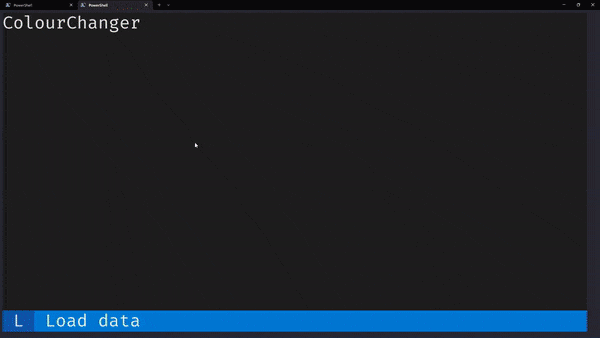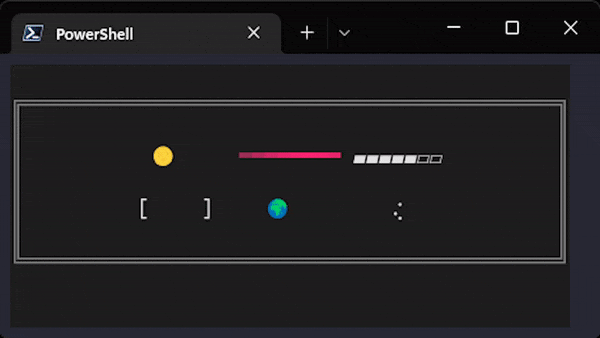A better asyncio sleep for Windows to fix animation
I spent some time optimizing Textual on Windows recently, and discovered something which may be of interest to anyone working with async code on that platform.
I spent some time optimizing Textual on Windows recently, and discovered something which may be of interest to anyone working with async code on that platform.
I joined Textualize back in January 2022, and since then have been hard at work with the team on both Rich and Textual. Over the course of the year, I’ve been able to work on a lot of really cool things. In this post, I’ll review a subset of the more interesting and visual stuff I’ve built. If you’re into terminals and command line tooling, you’ll hopefully see at least one thing of interest!
A new release of Textual lands 3 weeks after the previous release -- and it's a big one.
So... yeah... the blog. When I wrote my previous (and first) post I had wanted to try and do a post towards the end of each week, highlighting what I'd done on the "dogfooding" front. Life kinda had other plans. Not in a terrible way, but it turns out that getting both flu and Covid jabs (AKA "jags" as they tend to say in my adopted home) on the same day doesn't really agree with me too well.
I have been working, but there's been some odd moments in the past week and a bit and, last week, once I got to the end, I was glad for it to end. So no blog post happened.
Anyway...
Whenever you are cooking a time-consuming meal, you want to multitask as much as possible. For example, you do not want to stand still while you wait for a pot of water to start boiling. Similarly, you want your applications to remain responsive (i.e., you want the cook to “multitask”) while they do some time-consuming operations in the background (e.g., while the water heats up).
The animation below shows an example of an application that remains responsive (colours on the left still change on click) even while doing a bunch of time-consuming operations (shown on the right).

In this blog post, I will teach you how to multitask like a good cook.
Quote
Cutler, armed with a schedule, was urging the team to "eat its own dog food". Part macho stunt and part common sense, the "dog food diet" was the cornerstone of Cutler’s philosophy.
G. Pascal Zachary — Show-Stopper!
I can't remember exactly when it was -- it was likely late in 1994 or some time in 1995 -- when I first came across the concept of, or rather the name for the concept of, "eating your own dog food". The idea and the name played a huge part in the book Show-Stopper! by G. Pascal Zachary. The idea wasn't new to me of course; I'd been writing code for over a decade by then and plenty of times I'd built things and then used those things to do things, but it was fascinating to a mostly-self-taught 20-something me to be reading this (excellent -- go read it if you care about the history of your craft) book and to see the idea written down and named.

One of the things I love about mathematics is that you can solve a problem just by guessing the correct answer. That is a perfectly valid strategy for solving a problem. The only thing you need to do after guessing the answer is to prove that your guess is correct.
I used this strategy, to some success, to display spinners and indeterminate progress bars from Rich in Textual.
It's 8:59 am and, by my Portuguese standards, it is freezing cold outside: 5 or 6 degrees Celsius. It is my second day at Textualize and I just got into the office. I undress my many layers of clothing to protect me from the Scottish cold and I sit down in my improvised corner of the Textualize office. As I sit down, I turn myself in my chair to face my boss and colleagues to ask “So, what should I do today?”. I was not expecting Will's answer, but the challenge excited me:
I would like to talk about a serious issue in the Free and Open Source software world. Stealing code. You wouldn't steal a car would you?
But you should steal code from Open Source projects. Respect the license (you may need to give attribution) but stealing code is not like stealing a car. If I steal your car, I have deprived you of a car. If you steal my open source code, I haven't lost anything.
Warning
I'm not advocating for piracy. Open source code gives you explicit permission to use it.
From my point of view, I feel like code has greater value when it has been copied / modified in another project.
There are a number of files and modules in Textual that could either be lifted as is, or wouldn't require much work to extract. I'd like to cover a few here. You might find them useful in your next project.
We've released version 0.4.0 of Textual.
As this is the first post tagged with release let me first explain where the blog fits in with releases. We plan on doing a post for every note-worthy release. Which likely means all but the most trivial updates (typos just aren't that interesting). Blog posts will be supplementary to release notes which you will find on the Textual repository.
Blog posts will give a little more background for the highlights in a release, and a rationale for changes and new additions. We embrace building in public, which means that we would like you to be as up-to-date with new developments as if you were sitting in our office. It's a small office, and you might not be a fan of the Scottish weather (it's dreich), but you can at least be here virtually.